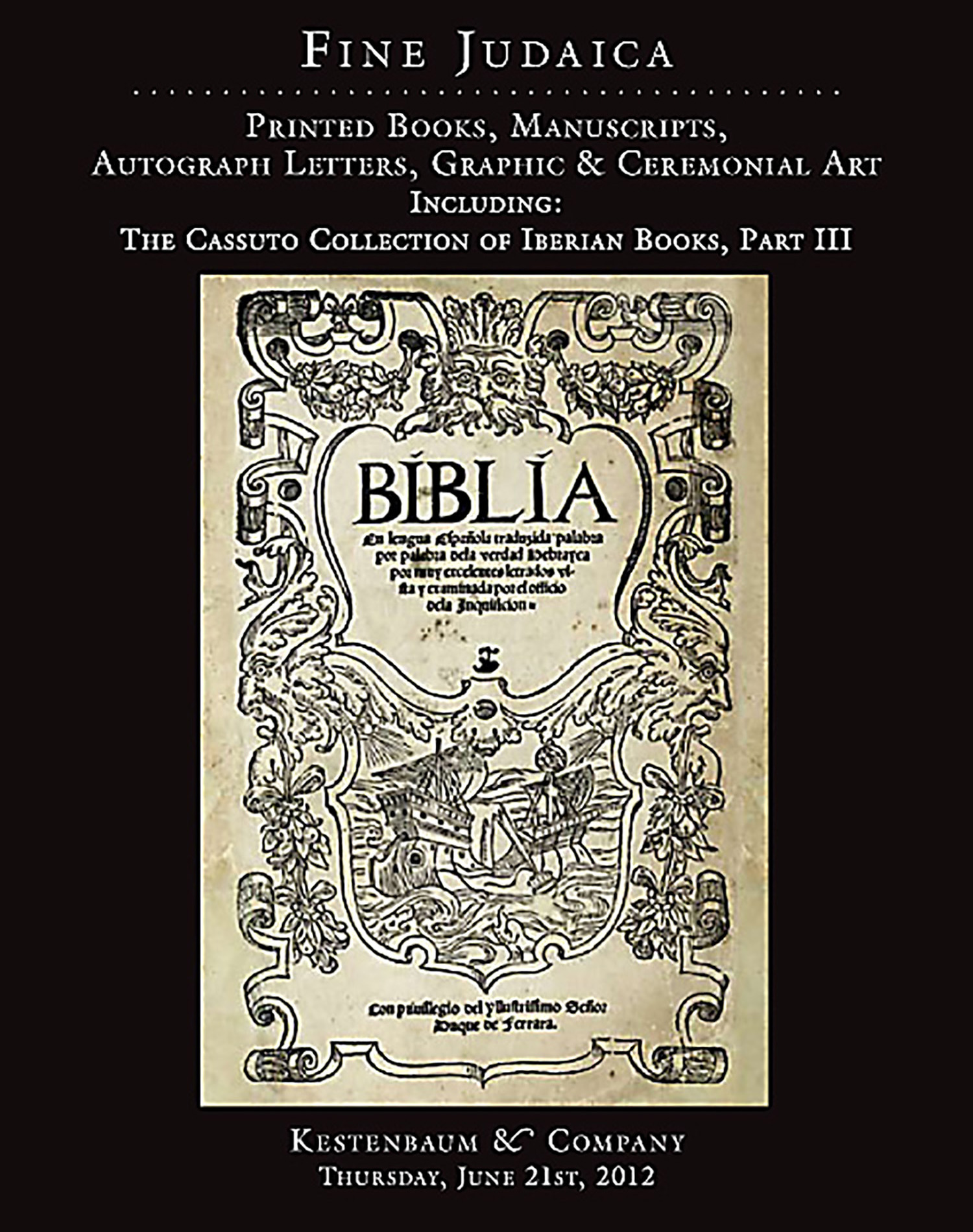Rumbos Peligrosos [“Dangerous Directions”: three short novels].

AUCTION 55 |
Thursday, June 21st,
2012 at 1:00
Fine Judaica: Printed Books, Manuscripts Autograph Letters, Graphic & Ceremonial Art
Lot 309
DE LA VEGA (PENSO), JOSEPH.
Rumbos Peligrosos [“Dangerous Directions”: three short novels].
Est: $2,000 - $3,000
PRICE REALIZED $2,000
Joseph Penso de la Vega (c.1650-92), the son of Isaac Penso Felix and Esther de la Vega, was born in Espejo (near Cordoba), Spain. His wealthy father took his family and fled to Amsterdam (via Antwerp) following his release from incarceration by the Spanish Inquisition. On the very day of his arrival on the free soil of Holland at Middleburg, Isaac was circumcised as a Jew. Joseph, after a brief stay in Livorno, established himself in Amsterdam and later Hamburg. At the tender age of seventeen, he composed a Hebrew drama, Asirei HaTikvah (Amsterdam, 1673), an allegorical depiction of the victory of the will over one’s passions. In addition, he authored several funeral orations and epithalamia.
The present work, Rumbos Peligrosos, is regarded as one of the finest examples of the Spanish short story in its time. It contains laudatory poems by Antonio de Castelo, Duarte Lopes Rosa, Alvaro Dias, Antonio Fernandez and Miguel de Barrios. Joseph de la Vega and Miguel de Barrios were the leading lights of the Amsterdam “academias” or literary salons. See T. Oelman, Marrano Poets of the Seventeenth Century (1982), p. 42, n. 30.
In general, de la Vegas’s other works evidence an interest in politics. His Triumphos del Aguila (1683) celebrates the relief of Vienna by John Sobieski. Likewise, his Retrato de la Prudencia (1690) extols the wisdom and valor displayed by William of Orange in mounting the throne of England. One of Penso’s outstanding works is Confusion de Confusiones, a whimsical depiction of Amsterdam’s bourse, believed to be the very first work to treat the workings of the stock exchange.
See EJ, Vol. XIII, cols.230-1; C. Roth, A History of the Marranos (1932), pp. 336-7.
